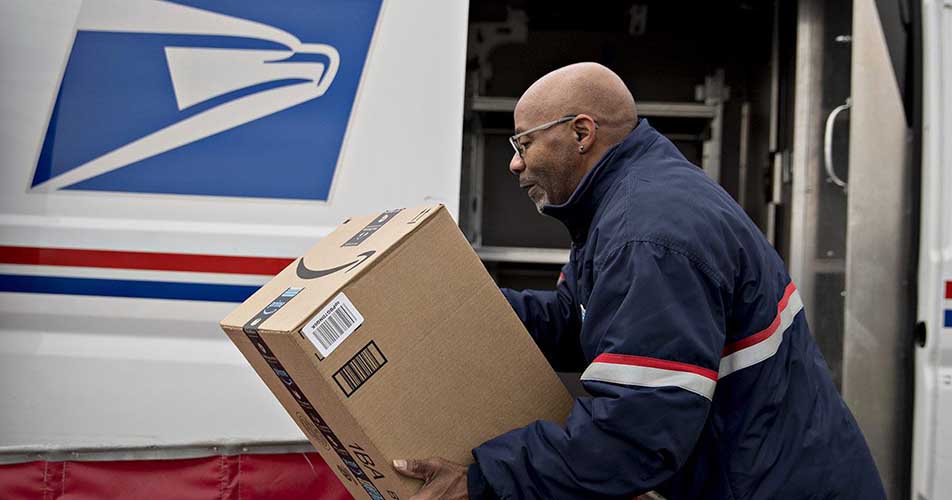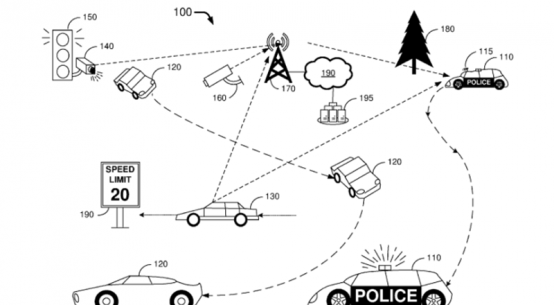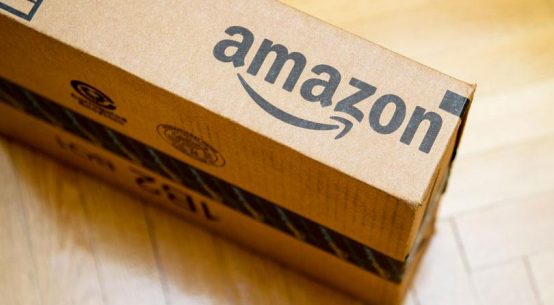
A usps delivery man
The USPS needs more customers like Amazon, not fewer.
In recent days, President Donald Trump has decried the financial condition of the U.S Postal Service, which, in a series of much-discussed tweets, he has said is losing “Billions of Dollars.” That part is true. From 2013 to 2016, the USPS averaged a net loss of $5.3 billion per year. The reasons behind those losses, though, are more complicated than the way Trump seems to see it. According to the president, the financial woes of the Postal Service have much to do with the deal it has with Amazon.com to deliver the internet retailer’s packages.
Leaving aside Trump’s claims about the Postal Service’s deal with Amazon (which is not a money loser) and his probable reasons for treating it like a piñata (he’s no fan of Amazon Chief Executive Officer Jeff Bezos, who also happens to be the owner of the Washington Post, a leading chronicler of this administration’s foibles) the president is right to be concerned with the state of the USPS. The question is whether Trump actually wants to fix the agency or simply tweet about it. If he wants to fix it, there are a number of things he could do.
For starters, he could support a group of U.S. senators with a set of postal reform proposals that could return the agency to solvency. In late March, Senator Tom Carper (D-Del.), introduced a bill with a bipartisan co-sponsorship that would move retired postal workers into Medicare, eliminating the agency’s unfunded health-care liabilities and its need to set aside huge sums to cover them. Naturally, some congressional deficit hawks have complained that this would just shift these costs from one side of the federal ledger to the other. Yet the USPS, the second-largest contributor to Medicare after the federal government, has said such a plan would only raise the government’s annual Medicare costs by a 10th of 1 percent.

The Senate bill, introduced March 22, would also restore half of the 4.3 percent emergency rate increase on items like first-class mail that the Postal Regulatory Commission granted the agency in 2013 only to revoke it three years later. It didn’t matter that first-class mail continued its inexorable decline as more people used email and pay their bills online. The result was a decline in American stamp prices, already among the lowest in the developed world, from 49 cents to 47 cents, which only added to the losses at the USPS.
These are worthy ideas, endorsed with rare unanimity by USPS management, postal worker unions, and many of the institution’s largest customers. Without White House support, however, the Senate bill is likely to wither and die, a fate suffered by other promising reform proposals in recent years. The tragedy isn’t that Trump has yet to express any interest in pushing such ideas, it’s that he appears not to understand how the agency actually functions.
As reported by Bloomberg News, Trump expressed a desire to aides last summer to raise the Postal Service’s rates for delivering Amazon packages. According to a person familiar with the matter who spoke on condition of anonymity, Trump’s staff explained to him that the Postal Service is an independent organization and its mail rates are set by a commission.
American presidents have a history of getting involved in matters postal, usually for the better. In 1792, George Washington signed the country’s first postal act, which included lower rates for newspapers in an effort to create an informed citizenry. It was so effective that French political philosopher Alexis De Tocqueville praised the American postal system as “the great link between minds” when he visited the country in 1831. Trump’s idol Andrew Jackson was so enamored with the Postal Service that he moved it into the president’s cabinet after he was elected in 1828 and stuffed it with his political supporters, a practice that continued for more than a century.
Montgomery Blair, Abraham Lincoln’s postmaster general, introduced free home delivery in cities at a time when most people had to endure long lines at the post office to get their letters. Under Woodrow Wilson, the Postal Service introduced airmail in 1918, clearing the runway for the commercial aviation industry. Richard Nixon signed a bill in 1970 removing the USPS from the president’s cabinet in an effort to remove it from the political hurly-burly and give it the nimbleness of a private company. Unfortunately, it was still subject to heavy-handed congressional and regulatory oversight and often struggled to break even.
In 2006, President George W. Bush signed a bill giving the USPS long overdue power to negotiate package shipping deals like the Amazon one. Unfortunately, the bill required the USPS to set aside $5 billion a year to pre-fund the health benefits of its future retirees. It wasn’t long before the Great Recession arrived, causing mail volume to plummet.

The financial burdens that the Bush administration imposed were clearly untenable. Yet Bush’s successor Barack Obama did virtually nothing to alleviate the situation. During his 2008 presidential campaign, Obama quipped, “UPS and FedEx are doing fine. It’s the post office that’s always having problems.” Postal workers understandably took issue with his remark.
Once Obama was in the White House, his administration quietly supported the USPS’s plan to end Saturday delivery, which would have saved $2 billion a year. It died in Congress because it was vociferously opposed by postal workers unions and congressional representatives from rural areas who said their constituents depended on traditional mail delivery. Meanwhile, the USPS’s losses mounted, and it was forced to cut hours at rural post offices and slow first-class mail delivery in a vain attempt to make ends meet.
Presidents no longer have the control over the Postal Service that they did in Jackson or Wilson’s day. Today, they get to appoint its board of governors. That’s about it for their formal powers, but they can use the bully pulpit to push for change. That’s what Trump is attempting to do now on Twitter in his criticisms of Amazon and the USPS. The problem is that he’s focused on the wrong issues. He returned to Twitter on April 2, recycling an argument made last year by Citigroup analysts who argued that, properly accounted for, the USPS was losing an average of $1.50 on every Amazon package.
It’s a complicated, legalistic case based on the presumption that the USPS, which declines to disclose the agreement’s terms, is essentially providing Amazon a free ride on its letter delivery network rather than requiring it to pay the full costs of the service. That notion excites people at UPS and FedEx and their investors, but few others seem to take it seriously. (The conservative Wall Street Journal editorial page, a frequent critic of the USPS, shrugged it off on Tuesday.)
The reality is that the USPS needs more customers like Amazon, not fewer. It’s required by law to visit every address in the country six days a week regardless of how many bills, greeting cards, and catalogs its letter carriers lug in their sacks. With first-class mail and the junkier kind disappearing, the USPS needs something else to put through the network to make money. Postal workers have a saying: “The internet giveth and the internet taketh away,” which is to say the agency’s future lies in online shopping. Amazon is the first retailer to integrate its distribution system into the Postal Service’s network, constructing sorting centers around the country to funnel packages to local post offices so letter carriers can tote them to people’s doors. As e-commerce continues to account for more of what Americans spend, it provides a potential path to a healthier financial future for the USPS.
This vision of the agency’s future is something a shrewd president might champion, but it would require Trump to stop making dubious claims about the reasons for the Postal Service’s financial difficulties. He might even admit that he’s been wrong about the Amazon deal. Unfortunately, that’s not Trump’s style.
- With reports from Bloomberg
.









